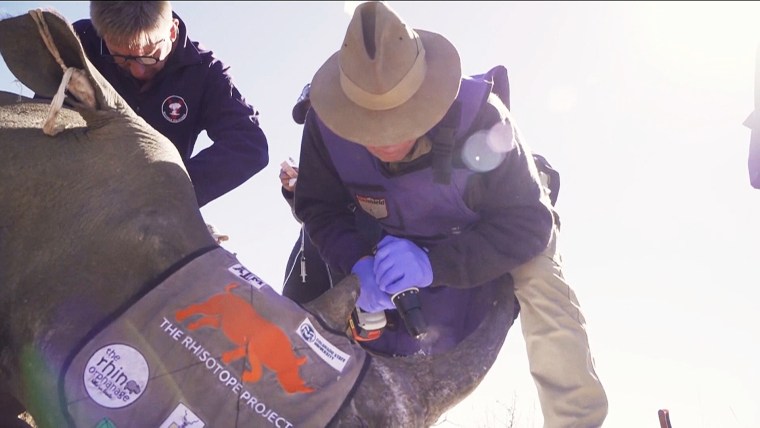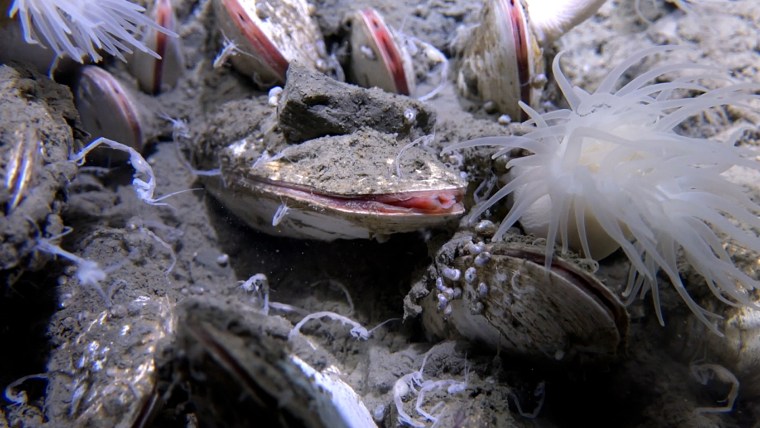Deep-sea submersible discovers flourishing ecosystem
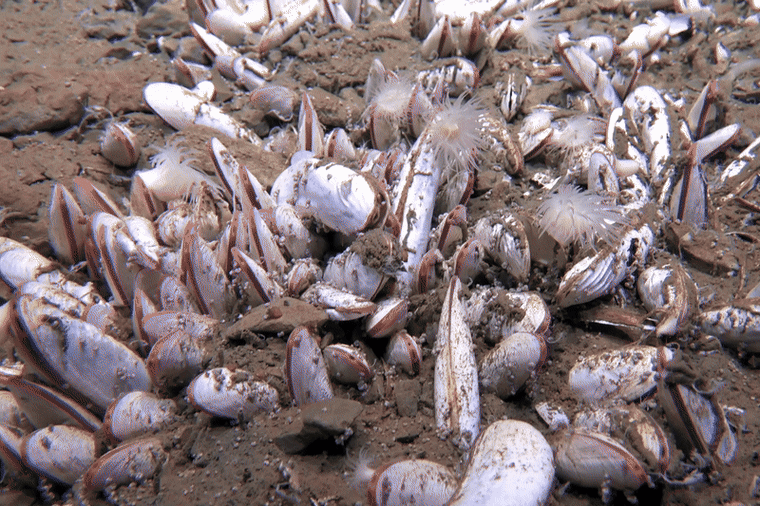
Bottom dwellers have never been more spectacular.
In a tiny, high-tech submersible sunk deeper than the height of Mount Everest, scientists have discovered a flourishing ecosystem some 30,000 feet below the surface of the Pacific Ocean.
The Chinese-led research team found spiky, bright marine worms darting through fields of crimson tubes, itself another kind of worm, poking out of the Earth’s crust like flowers.
There were dense beds of clams, each up to 9 inches long, and snow-like microbial mats creating an ethereal undersea dusting, some dozens of feet wide.
“This is the first time chemosynthesis-based communities have been directly observed at extreme depths,” Dominic Papineau, senior research scientist at the Chinese Academy of Sciences, told NBC News.

Papineau, who was among the authors of the research published Wednesday in the journal Nature, added that “many hadal animals from these trenches are spectacular in their forms and colors,” and because they survive by hosting microbes that metabolize methane, rather than through photosynthesis.
At 19,000 to 30,000 feet, hadal trenches are the ocean’s deepest zones that occur at the edge of one tectonic plate as it slides under another. “Long-standing theories suggest that chemosynthesis-based communities are widespread in hadal trenches, but few such communities have been discovered,” Papineau said.
Kareen Schnabel, a marine ecologist at Earth Sciences New Zealand, who was not involved in the study, said the team had discovered something “really rather unusual.”
“There were signs of really abundant, large life-forms and animals in these particularly deep areas,” she said.
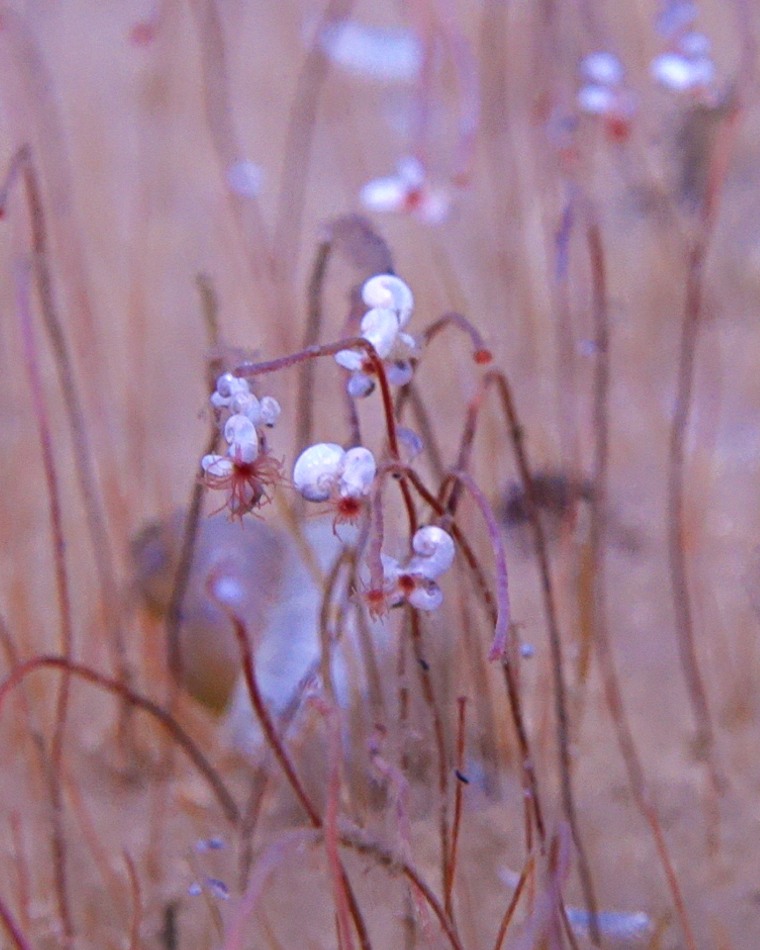
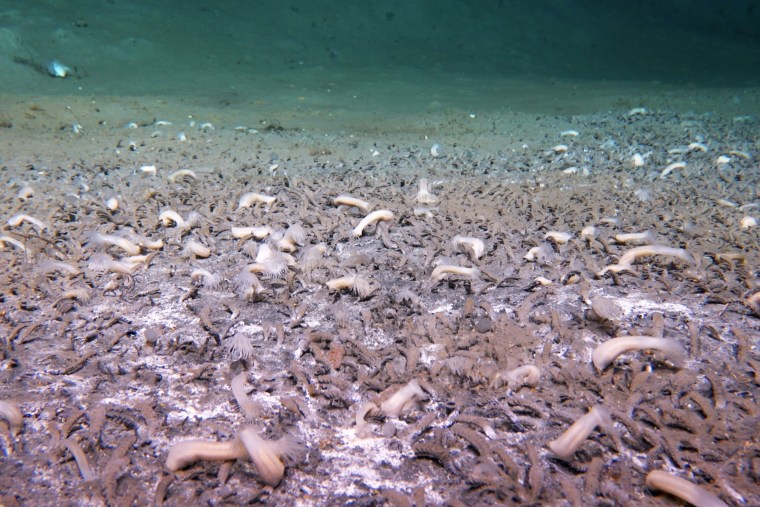
“Because it is such high pressure in these incredible depths, you wouldn’t necessarily expect them to live in these places,” she said of the creatures.
“The depths probed here, coupled with the thriving communities discovered and distribution ranges observed, significantly expand the known habitat, depth and biogeographical distributions for a great many species,” the researchers wrote.
The sun’s rays don’t reach these depths, so the creatures rely on chemosynthesis — the process of converting chemicals into food — rather than photosynthesis.
“These communities are sustained by hydrogen sulfide-rich and methane-rich fluids that are transported along faults traversing deep sediment layers in trenches,” the researchers said.
They also face constant crushing pressure of up to 98 megapascals (MPa), a unit of pressure, which is more than six times the force of an alligator’s bite.
The dives for this latest research were conducted in July and August last year by an international team of scientists, led by the Chinese Academy of Sciences’ Institute of Deep-Sea Science and Engineering.
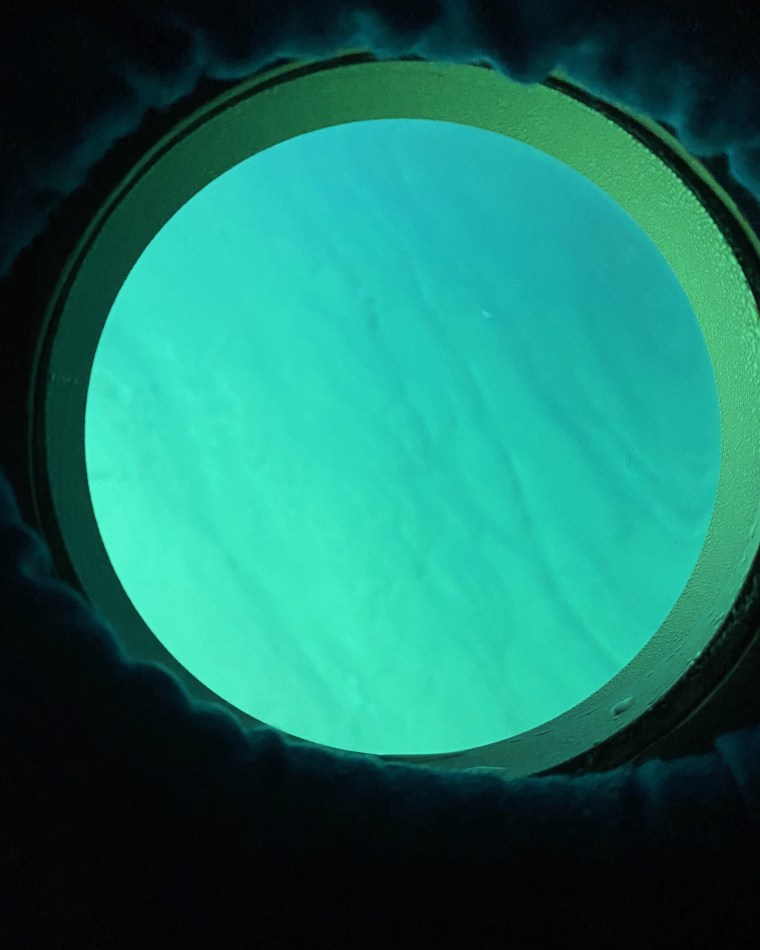
They investigated the Kuril-Kamchatka Trench, which is around 1,300 miles long and runs from Hokkaido in Japan to the Kamchatka Peninsula in Russia, and the Aleutian Trench, which extends about 1,800 miles from the Alaska and Kenai peninsulas to Kamchatka.
Schnabel previously conducted deep-sea surveys in the same three-person submersible, called Fendouzhe, that was used for this research.
She described the experience of venturing that far down in a submersible — a type of seacraft that became infamous after one imploded on a 2023 expedition to the Titanic.
“There is some nervousness, of course, as you’re dangling above a 10-kilometer hole in the Earth,” she said of her trip more than 32,000 feet below the Pacific’s surface in 2022 to research a trench north of New Zealand.
“You have a small window that is only 12 centimeters in diameter that you can look out of. You can’t stretch your legs while you’re sitting on a little bench in a small titanium sphere, which is only 1.8 meters wide,” she said, or about 6 feet.
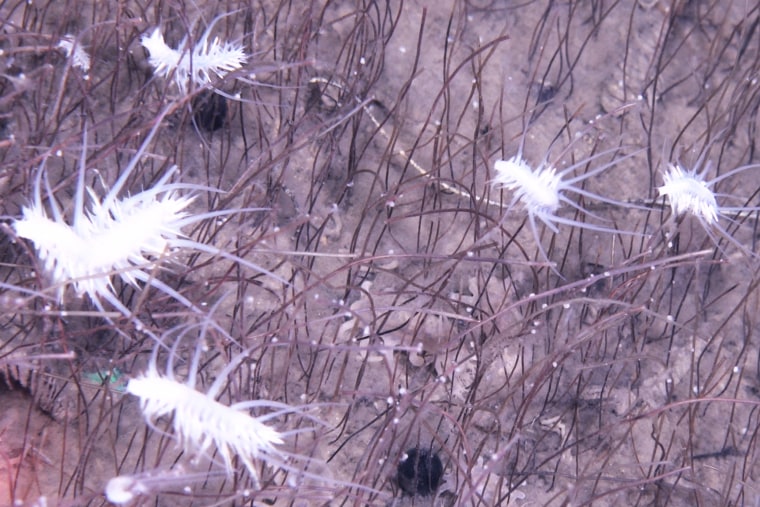
She said that she was shocked by what she saw at the bottom of the trench, through the submersible’s 4.7-inch window.
“When I got to go down, and we actually settled down on the ocean floor to have a look, I was stunned to see how much life and how many animals there were,” she said.
There has been little doubt that life could exist at these depths, but what took the research team by surprise was the sheer abundance of the ecosystem they found.
The discoveries “challenge current models of life at extreme limits” and show that these ecosystems might be more widespread than previously thought, they wrote.


